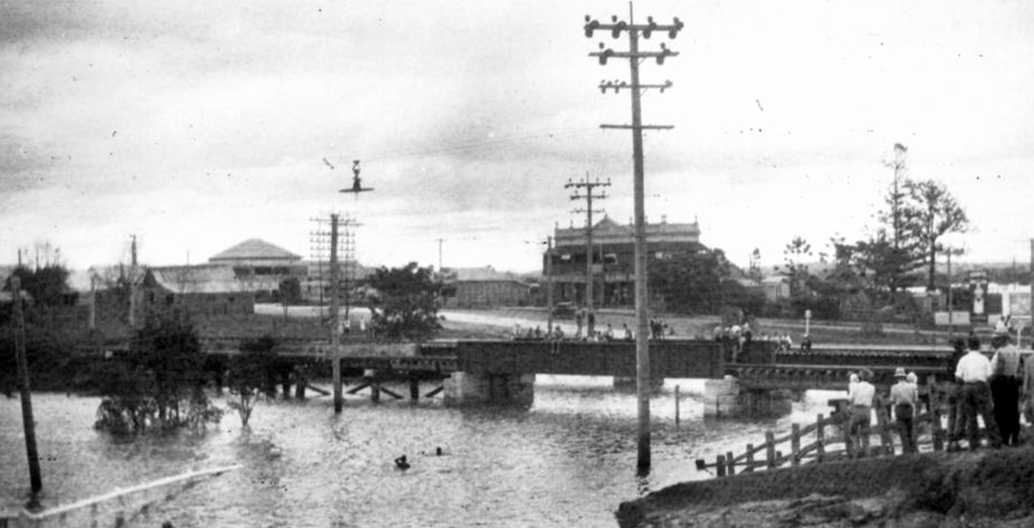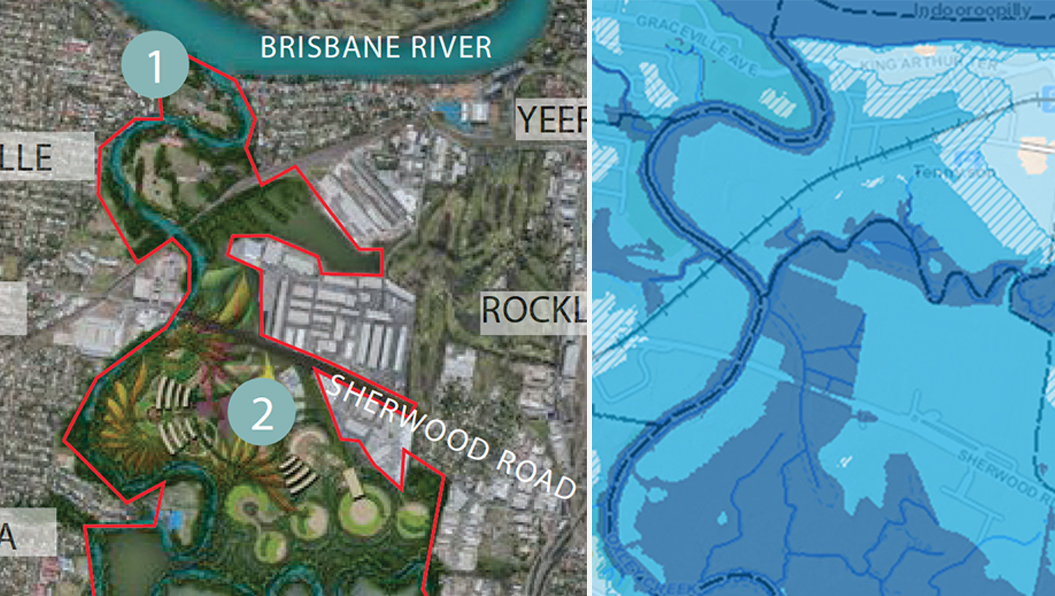
Drought and flood forgotten in development vision for 15-kilometre stretch of Brisbane waterway
Brisbane City Council’s plans to turn Oxley Creek Catchment into a “world class corridor and leisure landmark” through “economic development” pay little consideration to the area’s traumatic history of extreme weather events.
Experts have raised concerns that a $100 million proposal to re-develop Brisbane’s Oxley Creek catchment area contains little to no detail on how the area’s regular cycle of flood and drought will be managed.
Brisbane City Council hopes to revitalise a 15-kilometre corridor along Oxley Creek, covering an area of 600 hectares, through the creation of four precincts that will include urban farms, sport and recreation facilities and economic hubs. The latter will make up about five per cent of the site, according to a statement by the Brisbane City Council.
Lord Mayor Graham Quirk has tasked the newly-formed Oxley Creek Management Pty Ltd authority to establish the planning framework, but said the project will rely on public-private partnerships and take over 20 years to be completed due to the high number of stakeholders.
“Creating alternative land use outcomes and economic development opportunities is needed to help transform the once flood prone waterway into a space that will be a landmark community space. This will reduce the burden on ratepayers but produce a wonderful public asset,” he said.
But far from being “once flood prone”, Brisbane City Council’s own Flood Awareness Map shows that many areas within the corridor have a high likelihood of flooding, leaving large swathes of it “generally best suited to environmental and recreation uses” under its own grading system for Flood Planning Areas. The “Destination Food” development on Sherwood Road the council’s vision includes appears to sit within a medium to high flood risk area.

L: Oxley Creek vision, 'Destination Food' at 2; R: floodmap for the area, high risk flood areas in dark blue.
Kaan Ozgun, a research fellow at the University of Queensland’s Cooperative Research Centre for Water Sensitive Cities (CRCWSC), said that the proposal should have mentioned how the park would specifically mitigate flood and drought risks.
“One of the main problems we are dealing with are floods… What sort of design innovation, thinking or strategy do those public spaces offer while dealing with flood and drought issues?” he said in an interview with Foreground.
“The other risk could be drought. That could be another issue because it doesn’t really matter if it’s flood-protected. It might be in a drought cycle in the next five to six years and what will happen is that that infrastructure will become useless.
“Mono-functional infrastructure does not work anymore… We have to really consider multiple functions. For instance, why don’t we consider some sort of landscape for local water storage for future drought issues?”
Edward Morgan, a research fellow from the Cities Research Institute at Griffith University, agrees. He believes that a resilient park will be key, warning of a potential public safety issue, such as an empty lake or poor water quality, if it completely dries out. Oxley Creek was last inundated in 2011 when the spilling of raw sewage into its waters raised serious public health and safety concerns, partly in relation to toxins deposited in the soil.
“If you start having a big drought, is your park, whatever it happens to look like, able to cope with that or are we going to have to replace it after a drought? Is it resilient enough to cope with the highly variable rainfall we have here if it requires a lot of water to maintain whatever leisure facilities we have got going? What happens if we don’t have that water, because we will get another drought at some point in the future,” he told Foreground.
The Oxley Creek Catchment Association, a community-based not-for-profit, said it supports “any activities and funding that will improve Oxley Creek” but is “keen to ensure that any changes are done sensitively, in keeping with the environment and in consultation with the community.” Its executive officer, Anne Clarke, is one of the members of the Oxley Creek Management authority.
The Brisbane City Council has said that “more information will be available once the authority is established and begins to undertake the master planning.”


